The battery technology is one of the factors that directly impacts the value of electric cars. Other factors such as the supply chain, assembly line, and research and development also contribute to the higher proposed prices of electric cars compared to those with internal combustion engines.
Below is a list of the top 10 most expensive electric cars in the world, some of which are extremely rare and not accessible to everyone due to their limited availability even if they have the financial means.
Aspark Owl: $3.56 million (?86.4 billion)
Aspark Owl is a collaboration between the Japanese car manufacturer Aspark and Italian company Manifattura Automobili Torino, known for producing unique or limited edition cars.
The Owl is powered by 4 electric motors, delivering a total power of 1,980 horsepower and a torque of 1,920 Nm. The car can travel up to 400 km on a single charge. It can accelerate from 0-97 km/h in just 1.72 seconds and has a top speed of 413 km/h.
In addition to its high-performance powertrain, the Owl features a monocoque chassis and a carbon fiber body. The aerodynamic design and active aerodynamics system, along with the carbon ceramic brakes with 10-piston front calipers, further enhance the car’s performance.
Due to its exclusivity, the Owl is limited to only 50 units worldwide, making it a highly expensive car with a price tag of $3.56 million (?86.4 billion) per unit.
Lotus Evija – $2.5 million (?60.67 billion)
Lotus Evija impresses environmental enthusiasts with its immense power. It is equipped with 4 electric motors producing a combined 1,973 horsepower and a torque of 1,700 Nm. With this power, the Lotus Evija can accelerate from 0 to 100 km/h in just 3 seconds and has a top speed of 320 km/h. The car is powered by a 120 kWh battery pack positioned between the seats.
In addition to its powerful performance, the Evija also holds the fastest charging capability in the world, with a full charge in just 9 minutes at a maximum power of 800 kW.
Priced at $2.5 million (?60.67 billion), the Lotus Evija is the second most expensive electric car in the world, following the Aspark Owl. Only 130 units of the Lotus Evija will be manufactured globally.
Pininfarina Battista – $2.2 million (?53.39 billion)
Introduced at the 2019 Geneva Motor Show, Pininfarina Battista is a pure electric hypercar with a limited production run of 150 units worldwide, each priced at $2.2 million (?53.39 billion).
The Battista is powered by 4 electric motors generating a total output of 1,873 horsepower and 2,300 Nm of torque, thanks to a 120 kWh battery pack. The car can accelerate from 0 to 100 km/h in under 2 seconds and reach a top speed exceeding 350 km/h, as announced during the initial presentation.
Aside from its high-speed capabilities, the Battista also holds the record for the world’s fastest deceleration for a production electric car, stopping from 100 km/h in just 31 meters.
Rimac Nevera – $2.2 million (?53.39 billion)
Nevera is an all-electric sports car manufactured by the Croatian brand Rimac. Originally unveiled as the Rimac C-Two concept car at the 2018 Geneva Motor Show, the first Nevera cars were delivered to customers in August 2022. With production limited to around 150 units, the car is priced at approximately $2.2 million (?53.39 billion) per unit.
The car is equipped with 4 liquid-cooled electric motors, offering a maximum output of 1,914 horsepower and a torque of 2,360 Nm. Alongside a 120 kWh Lithium Manganese battery pack and a 4-wheel drive system, the car also features a “Drift” driving mode.
Unlike traditional combustion engine cars that mainly use differential gears for forward motion, the electric motors in the Nevera can rotate at the same speed in both directions, allowing the car to utilize its full power. As a result, the Nevera can accelerate from 0 to 100 km/h in 3.21 seconds and reach similar speeds when driving in reverse.
Recently, the Rimac Nevera broke another speed record, becoming the world’s fastest reverse-driving car with a maximum speed of 275.75 km/h, equivalent to the regular speed of a Lamborghini Miura.
Hispano Suiza Carmen Boulogne – $1.8 million (?43.68 billion)
Hispano Suiza may be relatively unfamiliar to many people, but it holds a high reputation among car enthusiasts.
The Spanish supercar Hispano Suiza Carmen was unveiled at the 2019 Geneva International Motor Show. The car is limited to just 5 units worldwide, each priced at $1.8 million (?43.68 billion).
The Carmen Boulogne model is equipped with 4 permanent magnet electric motors, with 2 motors mounted on each rear wheel. The system provides a maximum power of 1,100 horsepower and a torque of 1,600 Nm.
The car has a maximum range of 402 km on a single charge, and its maximum charging power is 80 kW.
Rolls-Royce Spectre – $413,000 (?10 billion)
The Rolls-Royce Spectre, launched in late 2022, is the first electric car in the history of the British luxury car brand.
Powered by an electric motor with a maximum output of 577 horsepower and a torque of 900 Nm, the Rolls-Royce Spectre can accelerate from 0 to 100 km/h in 4.5 seconds. The car’s chassis features adaptive suspension and 2-axis steering technology.
The car was officially launched in Southeast Asia on August 22nd and is expected to arrive in Vietnam soon, with a price of approximately $413,000 (?10 billion).
Faraday Future FF 91 2.0 Futurist Alliance – $309,000 (?7.5 billion)
FF 91 is the electric car from startup Faraday Future, often referred to as the “all-ability aiHypercar,” combining the features of a sedan, supercar, and SUV.
Since its introduction at the Consumer Electronics Show (CES) in 2017, Faraday Future has faced various challenges. The company filed for bankruptcy protection in 2019 and encountered legal issues. Unexpectedly, in 2021, Faraday Future went public on the NASDAQ stock exchange. With gradual recovery, the company delivered the first special edition FF 91 to a customer in August.
The Faraday Future FF 91 special edition (2.0 Futurist Alliance) is priced at $309,000 (approximately ?7.5 billion). It is powered by 3 electric motors, generating a total power of 1,050 horsepower and enabling acceleration from 0 to 95 km/h in 2.3 seconds. The car uses a 142 kWh battery pack, providing a range of 613 km per charge according to EPA standards.
Previously, the company had plans to deliver the first car in 2018. However, financial difficulties caused production and delivery delays.
Cadillac Celestiq – $300,000 (?7.28 billion)
Cadillac Celestiq serves as the flagship luxury sedan of General Motors. It features the new Ultium platform, handcrafted assembly, and limited production. Production of the car began in 2023, with an estimated price of around $300,000 (?7.28 billion).
The Celestiq is equipped with an 111 kWh battery pack, dual electric motors, and all-wheel drive. The drivetrain delivers an estimated output of around 600 horsepower and a maximum torque of 867 Nm, allowing the car to accelerate from 0 to 96 km/h in 3.8 seconds. The car has a range of approximately 483 km per charge.
The car supports DC fast charging up to 200 kW and can travel up to 126 km with just 10 minutes of charging.
Lucid Air Sapphire – $249,000 (?6 billion)
Introduced in August 2022, Lucid Air Sapphire poses a strong competition to the Tesla Model S Plaid.
The car is equipped with a triple electric motor system, with two motors at the rear axle and one at the front axle, delivering a power output of up to 1,200 horsepower. The top motor allows the Air Sapphire to accelerate from 0 to 100 km/h in less than 2 seconds, from 0 to 160 km/h in less than 4 seconds, and complete a quarter-mile drag race in less than 9 seconds.
The Air Sapphire is currently produced in limited quantities, with a starting price of $249,000 (approximately ?6 billion).
Maserati GranTurismo Folgore – $215,000 (?5.21 billion)
GranTurismo is the latest generation of Maserati cars introduced in late 2022, offering 3 different engine versions, including the brand’s first electric version – Folgore.
The GranTurismo Folgore is equipped with three permanent magnet electric motors, providing 402 horsepower on each motor, and a 92.5 kWh T-shaped battery pack leveraging Formula E technology. The top motor delivers a total power of 751 horsepower and a torque of 1,350 Nm. Power is transmitted to all four wheels with torque vectoring. In addition to the standard driving modes (Comfort, GT, Sport, Corsa, and ESC-Off), the Folgore also boasts a Max Range driving mode.
Currently, the car has a starting price of $215,000 (approximately ?5.21 billion).
TH (Tuoitrethudo)







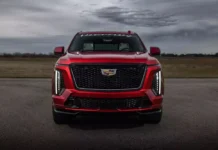






















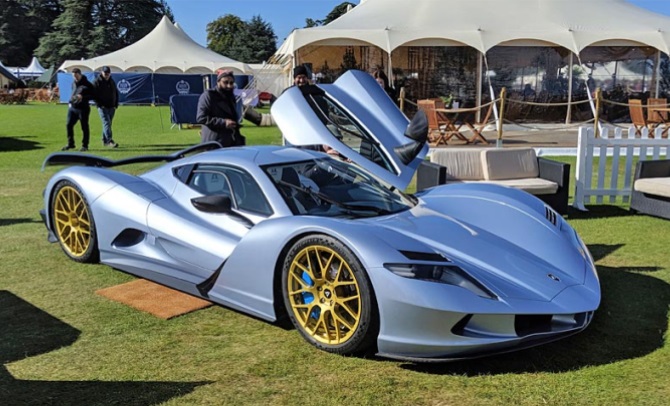



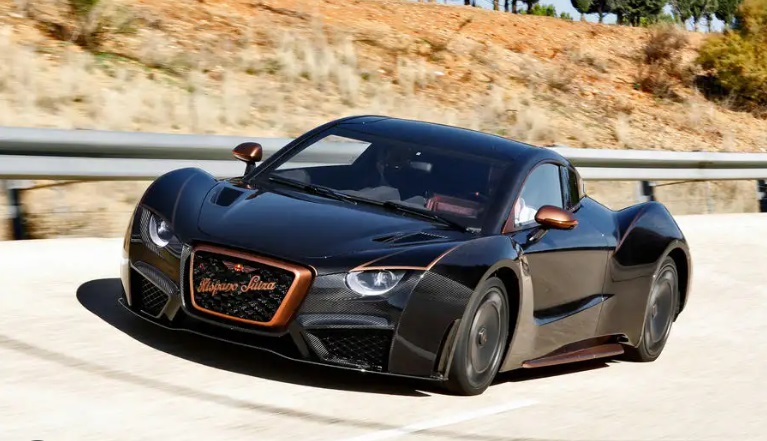
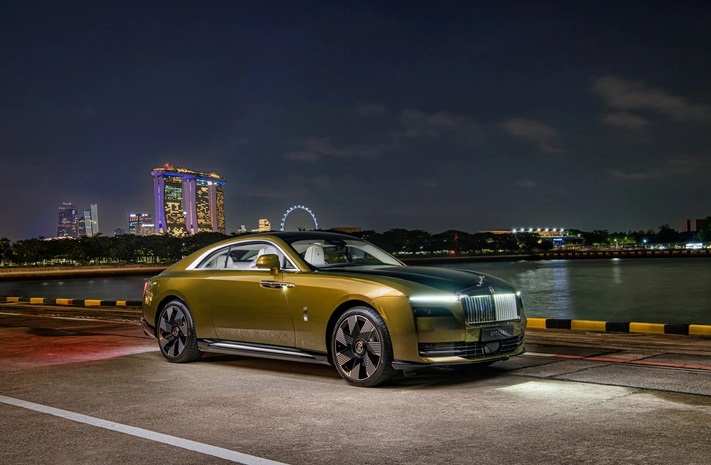


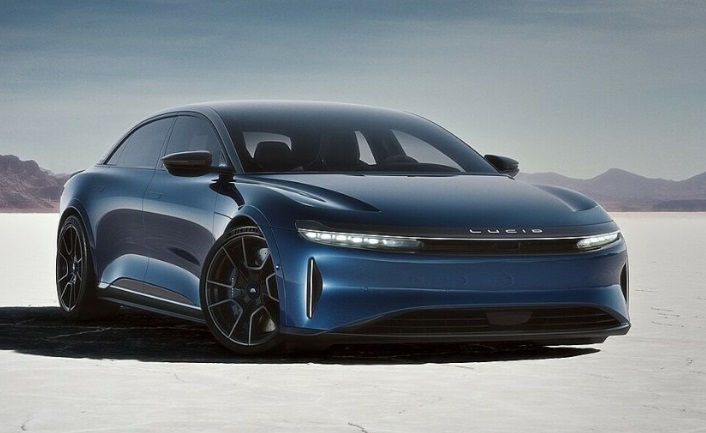
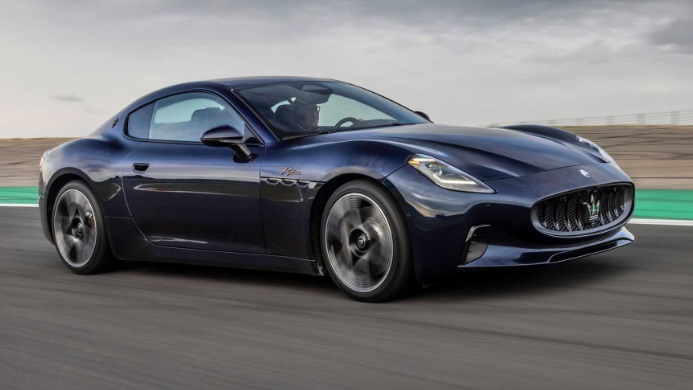

![[CAR REVIEW] Rolls-Royce Spectre: A Symphony of Luxury](https://vnauto.net/wp-content/uploads/2023/10/xehay-rrspectre-30082023-1-150x150.jpg)













![[VIDEO] VinFast VF 8 achieves 4/5 safety stars after Euro NCAP crash tests](https://vnauto.net/wp-content/uploads/2023/12/xehay-vf8-0712235-100x70.jpg)